The past few weeks have been relatively quiet on the roster movement front, with the transfer portal crawling to a stop (before Marquette’s Dawson Garcia entered on Friday, at least) and players going through pre-draft workouts and interviews before making final decisions on their professional status. We will get much more clarity before our next Way-Too-Early Top 25 in late July, as July 1 is the deadline for players to announce a transfer and still be eligible next season and July 7 is the deadline for players to withdraw from the NBA draft.
A month from now, once 2021-22 rosters are completely settled, the Way-Too-Early Top 25 could shift dramatically. The biggest names I’m watching in the next week are UCLA’s Johnny Juzang, Kansas’ Ochai Agbaji, Ohio State’s E.J. Liddell and Duane Washington Jr., Michigan’s Hunter Dickinson, Maryland’s Aaron Wiggins and West Virginia’s Miles McBride.
That doesn’t mean there weren’t any changes since the beginning of the month, however. Two teams are on the rise after landing key transfers. Oregon added Rutgers transfer Jacob Young, who should provide some much-needed perimeter pop for Dana Altman’s team, while Texas continued to hammer the transfer portal by picking up Tre Mitchell, a top-five transfer this spring. The Longhorns now have five of the top 30 in ESPN’s transfer rankings.
Nobody dropped out of the rankings, although West Virginia is beginning to knock on the door of the top 25 with the return of Taz Sherman. McBride and Sean McNeil are still in the draft for now, however. Alabama did drop several spots after Josh Primo‘s departure and to make room for Texas and Oregon’s rise.

Previous: 1
Unlike last season, Mark Few won’t be sweating during the NBA draft early-entry deadline. Last summer, it was a mixed bag for the Zags. Filip Petrusev opted to play overseas, but Corey Kispert and Joel Ayayi decided to return to Spokane. Gonzaga’s NBA decisions were sorted earlier in the process this time around. Andrew Nembhard knew right away he wanted to return, while preseason Wooden Award favorite Drew Timme withdrew his name in late May. Kispert, Ayayi and projected top-five pick Jalen Suggs all signed with agents fairly quickly. That doesn’t necessarily mean nothing is in limbo for Gonzaga’s roster; Iowa State transfer Rasir Bolton will need a waiver if he’s going to play next season for the Bulldogs, given that it will be his second transfer. But it should be a much quieter summer for the nation’s preseason No. 1 team, a group that will feature arguably the best player returning to college basketball (Timme) and the best player entering college basketball (Chet Holmgren).
Projected starting lineup:
Nolan Hickman (No. 22 in ESPN 100)
Andrew Nembhard (9.1 PPG)
Hunter Sallis (No. 14 in ESPN 100)
Chet Holmgren (No. 1 in ESPN 100)
Drew Timme (19.0 PPG)

Previous: 2
Like Gonzaga, Villanova will have a stress-free early-entry deadline. The Wildcats’ roster has been set since Collin Gillespie and Jermaine Samuels announced they were taking advantage of the extra year of eligibility and returning to the Main Line. Perhaps the only question regarding Jay Wright’s 2021-22 team is the status of Dhamir Cosby-Roundtree. He missed the entire season due to a stress fracture in his left leg but is eligible to return next season. By all accounts, that decision has not been made yet — and it’s not clear whether he would even be healthy enough to play next season after undergoing surgery in January. One player who hasn’t been discussed much so far in Villanova’s offseason is Trey Patterson, a top-40 recruit in the 2020 class who enrolled in the winter and appeared in two games for the Wildcats. He was part of the tryouts for the USA Men’s U19 World Cup Team and, despite getting cut, generated some positive reviews from those in attendance. Patterson could play a role next season.
Projected starting lineup:
Collin Gillespie (14.0 PPG, 4.6 RPG)
Justin Moore (12.9 PPG)
Caleb Daniels (9.6 PPG)
Jermaine Samuels (12.0 PPG)
Eric Dixon (3.0 PPG)
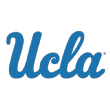
Previous: 3
UCLA’s preseason fortunes might change as much as anyone’s over the next week, as the Bruins anxiously await the NBA draft decisions of Johnny Juzang and Chris Smith. Smith missed the final 24 games of the season after suffering a season-ending torn ACL, so Mick Cronin’s team obviously proved it can win without him. But he was the team’s second-leading scorer and rebounder before his injury. Juzang, on the other hand, carried the Bruins in the NCAA tournament and played himself into a potential draft pick. He averaged 22.8 points and 4.0 rebounds in six NCAA tournament games, shooting 50.9% from the field and 37.5% from 3-point range — including four games of at least 23 points. Juzang reportedly struggled early at the NBA combine, so there might be more hope than expected of him coming back to Westwood. If Cronin goes 2-for-2 and both Juzang and Smith return, UCLA is a lock to open the season in the top five and a threat to make back-to-back Final Fours.
Projected starting lineup:
Tyger Campbell (10.2 PPG)
Johnny Juzang (15.5 PPG)
Jaime Jaquez Jr. (12.1 PPG)
Chris Smith (12.6 PPG)
Cody Riley (9.8 PPG)
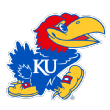
Previous: 4
Kansas is one of the few teams in the country to have released its nonconference schedule, and while the matchups in the ESPN Events Invitational are yet to be determined, it does allow us to take a peek at what the Jayhawks might be facing in the first couple months of the season. They open up in the Champions Classic as usual, where they will face a borderline Top 25 Michigan State team. Alabama is the second-best team in the aforementioned ESPN Events Invitational, but Belmont is another team worthy of Top 25 consideration and Drake brings back most of its key pieces from an NCAA tournament team. Then there’s the SEC/Big 12 Challenge showdown in January, and it was announced last week that Kansas will host Kentucky. By that point in the season, the Wildcats should be in full flow — meaning it will undoubtedly be the marquee game of that week. Kansas should be favored pretty comfortably in the rest of its nonleague games. It’s not a murderers’ row of a nonleague slate, but there are some intriguing matchups.
Projected starting lineup:
Remy Martin (19.1 PPG at Arizona State)
Christian Braun (9.8 PPG)
Ochai Agbaji (14.2 PPG)
Jalen Wilson (12.1 PPG)
David McCormack (13.4 PPG, 6.1 RPG)
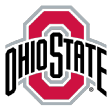
Previous: 5
While E.J. Liddell had the better 2020-21 season, word coming out of Columbus for several weeks has been that Duane Washington Jr. is the more likely player to stay in the NBA draft. And Washington boosted his stock in the past couple of weeks, starring at the G League Elite Camp and earning an invite to the NBA combine and then performing well while in Chicago. Washington is a very good 3-point shooter who was capable of getting hot from the perimeter and carrying the Buckeyes’ offense for stretches. He had two 30-point performances last season, dropping 30 against Michigan in a February loss and then 32 in the Big Ten tournament title game against Illinois. What happens if Washington decides to stay in the draft? Part-time starter Justin Ahrens is the best shooter on the team and could see an increased role, while incoming freshman Malaki Branham was a top-40 recruit who is at his best when driving to the rim. Chris Holtmann will have options either way, but the Buckeyes will drop if Washington doesn’t return.
Projected starting lineup:
Jamari Wheeler (6.8 PPG at Penn State)
Duane Washington Jr. (16.4 PPG)
Justice Sueing (10.7 PPG)
E.J. Liddell (16.2 PPG)
Kyle Young (8.6 PPG)
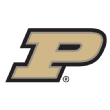
Previous: 6
It was expected, but Trevion Williams‘ decision to withdraw from the NBA draft and return to the Boilermakers cements Purdue as a Big Ten title contender and potential Final Four team. Matt Painter now officially returns his top eight scorers from a group that went 13-6 in the Big Ten and earned a 4-seed in the NCAA tournament. Williams will be a legitimate threat to win Big Ten Player of the Year and earn preseason All-America honors. He led the nation in usage rate and was one of the best offensive rebounders in the country, but still managed to be an efficient and unselfish offensive player. Williams had 11 double-doubles, including 26 points and 14 rebounds against Ohio State in the Big Ten tournament and 30 points against Indiana State in nonconference play. The key for him might be avoiding foul trouble; Williams committed at least three fouls in 18 of 28 games. That said, he fouled out only twice and avoided a disqualification in the final 23 games of the season.
Projected starting lineup:
Eric Hunter Jr. (8.5 PPG)
Jaden Ivey (11.1 PPG)
Sasha Stefanovic (9.3 PPG)
Mason Gillis (5.2 PPG)
Trevion Williams (15.5 PPG, 9.1 RPG)
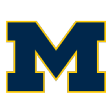
Previous: 8
As long as Juwan Howard is coaching in Ann Arbor and continues to have high levels of success with the Wolverines, the annual rumors linking him to head-coaching vacancies in the NBA won’t go away. As Adrian Wojnarowski reported earlier this month, though, Howard has told NBA teams he’s not interested in leaving Michigan. And given that he has yet another potential Final Four contender on his hands in 2021-22, why would he go? The key for this ranking moving forward will be whether Hunter Dickinson returns to college for his sophomore season or keeps his name in the NBA draft. Dickinson was one of the best freshmen in the country last season and would be the go-to guy for the Wolverines next season. If he does leave, Howard at least has five-star recruit Moussa Diabate ready to go. Diabate is a drastically different player from Dickinson, but he’s a terrific rebounder and defensive player who plays with energy. Having both in the fold would obviously be better.
Projected starting lineup:
DeVante’ Jones (19.3 PPG at Coastal Carolina)
Eli Brooks (9.5 PPG)
Caleb Houstan (No. 7 in ESPN 100)
Brandon Johns Jr. (4.9 PPG)
Hunter Dickinson (14.1 PPG, 7.4 RPG)

Previous: 7
It’s not often a player comes off the bench for three years and then has a breakout season as a senior, but I don’t think that’s an unreasonable expectation for Matthew Mayer. Mayer decided earlier this month to withdraw his name from the NBA draft and return to Waco, and he’s a sleeper pick for Big 12 Player of the Year. He hasn’t started a single game during his three seasons at Baylor, and he played fewer than 16 minutes per game even during his promising junior campaign in 2020-21. But Mayer is a terrific athlete who shot nearly 40% from 3-point range and his per-40 numbers are impressive: 20.7 points and 9.5 rebounds. He scored in double figures 11 times off the bench, including twice in the NCAA tournament. Without Jared Butler, Davion Mitchell and MaCio Teague, Scott Drew will need players to step up on the offensive end. Leading returning scorer Adam Flagler and Arizona transfer James Akinjo will certainly have their fair share of shots, but Mayer can be a real X factor entering the campaign.
Projected starting lineup:
James Akinjo (15.6 PPG at Arizona)
Adam Flagler (9.0 PPG)
Kendall Brown (No. 15 in ESPN 100)
Matthew Mayer (8.2 PPG)
Jonathan Tchamwa Tchatchoua (6.3 PPG, 5.0 RPG)

Previous: 9
John Calipari will have plenty of different lineups to play with next season, especially if Davion Mintz opts to return to Lexington for another season. Without Mintz, though, I still think Calipari will look to go with the two-headed playmaking backcourt of Georgia transfer Sahvir Wheeler and five-star freshman TyTy Washington. Wheeler is an excellent distributor who can also get his own shot, while Washington has good size and likes to get into the lane to score. The two can certainly coexist in the backcourt together. With shooting an issue last season, Davidson transfer Kellan Grady should get the nod on the wing, but Iowa transfer CJ Fredrick was one of the elite shooters in college basketball last season and will have an extensive role. Up front, Calipari has the most returning experience, with Keion Brooks a double-figure scorer and Jacob Toppin and Lance Ware seeing minutes late in the season. On top of that, West Virginia transfer Oscar Tshiebwe was the Big 12 Preseason Player of the Year last fall before struggling, while five-star Daimion Collins will provide a defensive spark and Bryce Hopkins will get minutes as well. Talent and depth won’t be an issue.
Projected starting lineup:
Sahvir Wheeler (14.0 PPG, 7.4 APG at Georgia)
TyTy Washington (No. 12 in ESPN 100)
Kellan Grady (17.1 PPG at Davidson)
Keion Brooks Jr. (10.3 PPG, 6.8 RPG)
Oscar Tshiebwe (8.5 PPG, 7.8 RPG at West Virginia)

Previous: 14
Chris Beard was never afraid to use the transfer portal during his time at Little Rock and Texas Tech, but he has taken it to a new level since arriving in Austin. As mentioned, the Longhorns have five of our top 30 transfers — and it will be interesting to see how Beard manages all that talent, especially in the frontcourt. The latest coup for Texas was nabbing Tre Mitchell, who at the time was the highest-ranked uncommitted transfer still available. Mitchell earned first-team All-Atlantic 10 honors after averaging 18.8 points and 7.2 rebounds for UMass, including a trio of 30-point performances. Mitchell should immediately slot into the starting lineup, but that means the likes of former Vanderbilt forward Dylan Disu — the SEC’s leading rebounder — and Creighton transfer Christian Bishop — who averaged 13.0 points and 10.3 rebounds in the NCAA tournament — could come off the bench. Or Beard could go with a bigger lineup and move Kentucky transfer Devin Askew to a backup role. These are all good problems to have in Year 1 at a big program.
Projected starting lineup:
Devin Askew (6.5 PPG at Kentucky)
Courtney Ramey (12.2 PPG)
Andrew Jones (14.6 PPG)
Timmy Allen (17.2 PPG at Utah)
Tre Mitchell (18.8 PPG at UMass)

Previous: 15
It shouldn’t come as a surprise, but Dana Altman has reshaped the Ducks’ roster this offseason via the transfer portal. The most recent addition, Rutgers transfer Jacob Young, pushes Oregon up a few spots in the top 25. Young, the younger brother of former Oregon guard Joseph Young, is a very good scorer who can shoot it from the perimeter. He had the best offensive season of his career last season, averaging 14.1 points and 3.4 assists while shooting 36.9% from 3-point range as a senior. Oregon needed some more perimeter scoring after the departures of Chris Duarte and LJ Figueroa, and Young should be able to fill that role. He will join returnee Will Richardson and Oklahoma transfer De’Vion Harmon in a versatile backcourt group, while Eric Williams and Quincy Guerrier should shoulder most of the scoring load in the frontcourt. Altman could trot out a lineup with the aforementioned five players, but he can also use one as a sixth man and then start top-10 recruit Nate Bittle, N’Faly Dante or Franck Kepnang down low.
Projected starting lineup:
Will Richardson (11.3 PPG)
De’Vion Harmon (12.9 PPG at Oklahoma)
Eric Williams Jr. (10.0 PPG)
Quincy Guerrier (13.7 PPG at Syracuse)
Jacob Young (14.1 PPG at Rutgers)

Previous: 13
There wasn’t any personnel movement for the Blue Devils since our last ranking, just the most accomplished basketball coach in the past half-century announcing his retirement after next season. Mike Krzyzewski will coach his final season in 2021-22 before stepping down and making way for Jon Scheyer to take over the program. That’s still a year away, though. Krzyzewski will want to end his career on a high note, and while I might be a bit lower on Duke than consensus rankings around the country, it’s still a team that should be the ACC favorite and should compete for a Final Four run. For me, the frontcourt is the intriguing part of this roster — and likely holds the key to determining the Blue Devils’ ceiling. Paolo Banchero is a legitimate candidate to be selected No. 1 in next summer’s NBA draft, and Mark Williams is poised for a breakout sophomore season at the center spot. A.J. Griffin saw his ranking dip late in his high school career due to injury, but he generated significant buzz at the Iverson Classic in May and looks back to his old form.
Projected starting lineup:
Jeremy Roach (8.7 PPG)
Wendell Moore Jr. (9.7 PPG)
A.J. Griffin (No. 26 in ESPN 100)
Paolo Banchero (No. 3 in ESPN 100)
Mark Williams (7.1 PPG, 4.5 RPG)
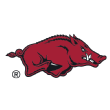
Previous: 11
Arkansas’ rotation seemed pretty set right after the end of the season, when the Razorbacks went out and reeled in transfers Au’diese Toney (Pittsburgh), Stanley Umude (South Dakota) and Chris Lykes (Miami) very quickly. With those three entering the fold and Devo Davis, Jaylin Williams and JD Notae coming back, it looked as if Eric Musselman had a pretty solid top six. But Musselman isn’t one to let an opportunity slip away, and he shored up the second half of the roster with a pair of transfers later in the spring: Jaxson Robinson (Texas A&M) and Trey Wade (Wichita State). Robinson was a former ESPN 100 recruit who reclassified to 2020 and didn’t find much of a role with the Aggies. But he has good size and can really shoot it from the perimeter. Wade has been a consistent starter over the past two seasons at Wichita State, providing scoring and rebounding in the frontcourt while also showing the ability to step out and make 3s.
Projected starting lineup:
Chris Lykes (15.5 PPG at Miami)
Devo Davis (8.5 PPG)
Au’diese Toney (14.4 PPG at Pittsburgh)
Stanley Umude (21.6 PPG at South Dakota)
Jaylin Williams (3.7 PPG, 4.7 RPG)
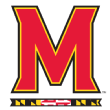
Previous: 12
While Maryland fans might be happy to see Aaron Wiggins impressing at the G League Elite Camp and then the NBA combine, it does increase the chances he’ll end up leaving College Park early and keeping his name in the NBA draft. That would be a significant blow for Mark Turgeon, as Darryl Morsell‘s Monday decision to transfer to Marquette rather than return to College Park eliminated a potential contingency plan for the Terps should Wiggins depart. It would increase the pressure on top-50 freshman Julian Reese to make an impact and would also likely bring Hakim Hart back into the lineup after starting 19 games last season. Hart has good size for the wing and even scored 32 points in a nonconference game against St. Peter’s, but Wiggins is one of the best players in the Big Ten. Another note on Maryland’s depth: Utah transfer Ian Martinez underwent knee surgery earlier this month but should be back in September.
Projected starting lineup:
Fatts Russell (14.7 PPG at Rhode Island)
Eric Ayala (15.1 PPG)
Aaron Wiggins (14.5 PPG)
Donta Scott (11.0 PPG)
Qudus Wahab (12.7 PPG, 8.2 RPG at Georgetown)
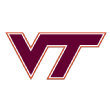
Previous: 16
The big question facing Mike Young’s team entering the offseason was whether Keve Aluma would return for his senior season. Aluma was one of the best players in the ACC last season and entered his name into the draft process shortly after the season ended. Earlier this month, though, he announced he was going back to Blacksburg — and that locks Virginia Tech in as a potential second-weekend NCAA tournament team for me. Aluma was dominant for stretches last season, ranking second in the league in field goal percentage while leading the ACC in offensive rebounding percentage and free throw rate. He also ranked inside the top 10 in block percentage and defensive rebounding percentage. He notched six double-doubles, including four in a five-game stretch in late January and February. Aluma gives the Hokies an anchor on the interior, allowing Young to play with three or four 3-point shooters at all times on the offensive end.
Projected starting lineup:
Storm Murphy (17.8 PPG, 4.3 APG at Wofford)
Tyrece Radford (12.2 PPG)
Nahiem Alleyne (11.1 PPG)
Justyn Mutts (9.5 PPG, 6.4 RPG)
Keve Aluma (15.2 PPG, 7.9 RPG)
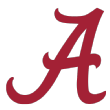
Previous: 10
Alabama probably won’t be awaiting the NBA draft withdrawal deadline with any suspense. Joshua Primo played his way into first-round NBA draft consideration at last week’s combine, and given his NBA-attractive age — he was the youngest player in college basketball last season — Primo is imminently expected to announce he’ll remain in the draft. With Primo out of the lineup, I would expect Nate Oats to play a lineup a little bigger than he did last season, with Furman transfer Noah Gurley potentially taking Primo’s spot. The 6-foot-8 forward would add some size to the frontcourt, but he certainly can still play in Oats’ system; Gurley took 4.5 3-pointers per game, hitting them at a 34% clip. Another option is Keon Ellis, who averaged 5.5 points off the bench last season but was included as a late-second round pick in ESPN’s most recent 2022 mock draft.
Projected starting lineup:
Jahvon Quinerly (12.9 PPG, 3.2 APG)
J.D. Davison (No. 13 in ESPN 100)
Jaden Shackelford (14.0 PPG)
Noah Gurley (15.4 PPG at Furman)
Charles Bediako (No. 33 in ESPN 100)
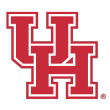
Previous: 17
It didn’t come as much of a surprise, but Marcus Sasser and Fabian White officially withdrawing their names from the NBA draft and returning to the Cougars was still great news for Kelvin Sampson’s program. As was Houston finalizing an agreement with Virginia to play a home-and-home series for the next two seasons. The Cougars are unlikely to be in a position where a poor nonconference schedule can be held against them, but we’ve seen countless AAC teams sweat on Selection Sunday due to a lack of quality wins on a résumé. Wichita State, last season’s regular-season champion, was a First Four team because its best win besides Houston came against Ole Miss. Houston played Texas Tech on a neutral site last season and will now face Virginia the next two seasons, in addition to the Maui Invitational this season. That tends to be looked upon fondly by the committee. And Houston has the talent and coaching to pick up quality wins against marquee opponents — the Cougars will undoubtedly be favored against Virginia.
Projected starting lineup:
Marcus Sasser (13.5 PPG)
Tramon Mark (8.0 PPG)
Kyler Edwards (10.1 PPG at Texas Tech)
Fabian White (6.3 PPG)
Reggie Chaney (4.6 PPG)

Previous: 18
Like Kansas, Tennessee has released its complete nonconference schedule — and it’s awfully intriguing for the Volunteers. They were matched up with Villanova in the first game of the Hall of Fame Tip-Off Tournament, and will then face North Carolina or Purdue in the championship or consolation game. Tennessee will head to Colorado a couple of weeks after that, and while the Buffaloes aren’t as good as they were last season, it’s still a difficult road trip before heading to Madison Square Garden to play Texas Tech. A rivalry game against Memphis takes place right before a home game against Arizona and new head coach Tommy Lloyd. If that all weren’t enough, the Volunteers (and ex-Longhorns coach Rick Barnes) were given a road trip to Texas as part of the Big 12/SEC Challenge. The Longhorns will have one of the most talented rosters in the country next season, and by that point in the season, should be hitting on all cylinders. Barnes’ group will be battle-tested.
Projected starting lineup:
Kennedy Chandler (No. 8 in ESPN 100)
Justin Powell (11.7 PPG at Auburn)
Victor Bailey Jr. (10.9 PPG)
Josiah-Jordan James (8.0 PPG)
John Fulkerson (9.5 PPG)

Previous: 19
It didn’t get as much attention as the likes of Trevion Williams or Keve Aluma announcing their returns to college — and rightfully so — but Florida State guard RayQuan Evans deciding to take advantage of his extra year of eligibility will be a boost for Leonard Hamilton and the Seminoles. He provides some experience and depth in the backcourt, where Florida State could ultimately start a transfer and a freshman. Evans did start 18 games a season ago, and showed he was a capable distributor who could make the occasional 3-pointer. He also scored in double figures on four occasions, including a 24-point outburst against NC State in January, the first of three straight double-figure scoring efforts for Evans. Hamilton might not have as much experience as he usually does on the roster this season, but he’s bringing in three top-60 freshmen, two impact transfers and one of the best junior college bigs in the country. Guys such as Evans, Anthony Polite and Malik Osborne will still play huge roles, though.
Projected starting lineup:
Caleb Mills (9.8 PPG at Houston)
Jalen Warley (No. 59 in ESPN 100)
Matt Cleveland (No. 28 in ESPN 100)
Anthony Polite (10.1 PPG)
Malik Osborne (5.9 PPG, 4.5 RPG)
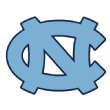
Previous: 20
North Carolina had one of the deepest post rotations in the country last season, with Garrison Brooks, Armando Bacot, Day’Ron Sharpe and Walker Kessler all capable of making money playing at the next level. After Brooks and Kessler transferred and Sharpe turned pro, however, Bacot will see the lion’s share of the minutes down low next season. He announced his return to Chapel Hill earlier this month, which is a major, if expected, boost for new head coach Hubert Davis. Bacot was dominant down the stretch, averaging 16.7 points, 9.5 rebounds and 1.7 blocks in the final six games of the season. He shot 65.5% from the field over that stretch and was impossible to keep off the offensive glass, averaging an otherworldly 5.2 offensive rebounds per game. Part of the improved numbers came simply from being on the court for more time; he played more than 25 minutes per game over that stretch but played around 22 minutes per game the rest of the season. If he stays healthy and out of foul trouble, I think he’ll see closer to the former this coming season.
Projected starting lineup:
Caleb Love (10.5 PPG, 3.6 APG)
R.J. Davis (8.4 PPG)
Kerwin Walton (8.2 PPG)
Brady Manek (10.8 PPG at Oklahoma)
Armando Bacot (12.3 PPG, 7.8 RPG)
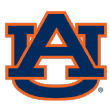
Previous: 21
Given that they were a 13-14 team with zero seniors last season, the Tigers had as busy an offseason as anyone in the country. They saw Sharife Cooper and JT Thor go to the NBA draft — and both could get picked in the first round — and also had Justin Powell, Jamal Johnson and Javon Franklin enter the transfer portal. Bruce Pearl rebounded by landing four impact transfers: Walker Kessler (North Carolina), K.D. Johnson (Georgia), Wendell Green Jr. (Eastern Kentucky) and Zep Jasper (Charleston). A fifth transfer, Desi Sills, opted to go to Arkansas State after originally committing to the Tigers. They also lost ESPN 100 prospect Trey Alexander, who decommitted and ultimately landed at Creighton. With the dust finally settled after Sills’ departure, it leaves Auburn with a frontcourt featuring two projected first-round picks in Jabari Smith and Allen Flanigan, a former five-star prospect in Kessler, and a returning starter and double-figure scorer in Jaylin Williams — plus a backcourt filled with transfers. Pearl has to find the right mix.
Projected starting lineup:
Wendell Green (15.8 PPG, 5.0 APG at Eastern Kentucky)
K.D. Johnson (13.5 PPG at Georgia)
Allen Flanigan (14.3 PPG)
Jabari Smith (No. 5 in ESPN 100)
Walker Kessler (4.4 PPG at North Carolina)

Previous: 22
Given that the Bonnies played only two nonconference games last season and then lost pretty handily to LSU in the NCAA tournament, it hasn’t been easy to truly gauge how good Mark Schmidt’s team was last season — and how good it might be this season. But there will be no such questions next season, as the Bonnies are testing themselves in the nonconference before Atlantic 10 play. They haven’t unveiled their entire schedule, but will open the season against MAAC regular-season champion Siena and will face Virginia Tech in Charlotte in mid-December. The Hokies are No. 16 in our rankings and should be an ACC title contender if things go right. In addition, the Bonnies are taking part in the Charleston Classic, which will feature perennial NCAA tournament team West Virginia and a slew of other capable teams. In what should be an improved A-10, with at least a handful of potential NCAA tournament teams, St. Bonaventure will be well-prepared for the league slate.
Projected starting lineup:
Kyle Lofton (14.4 PPG, 5.5 APG)
Jaren Holmes (13.8 PPG)
Dominick Welch (11.4 PPG)
Jalen Adaway (12.2 PPG)
Osun Osunniyi (10.7 PPG, 9.4 RPG)
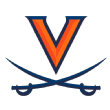
Previous: 23
With Trey Murphy III steadily rising up draft boards as the offseason progressed, it was always difficult to see him returning to Charlottesville for another season. Murphy made it official a couple of weeks ago that he was keeping his name in the NBA draft, and he’s now looking like a first-round pick. Unfortunately for Tony Bennett, Murphy’s departure leaves the Cavaliers with a limited amount of proven talent on the roster. Seven players have left since the end of the season, and five players are back — with only two averaging more than 2.5 points last season. And although transfers Armaan Franklin and Jayden Gardner should make immediate impacts, Virginia isn’t bringing in any freshmen who played high school basketball on American soil — although our NBA draft expert Jonathan Givony is high on Igor Milicic, considering him one of the best European prospects entering college basketball next season. Bennett will need Milicic to make an impact, while also finding some interior production from the likes of Francisco Caffaro and Kadin Shedrick.
Projected starting lineup:
Kihei Clark (9.5 PPG, 4.5 APG)
Reece Beekman (4.7 PPG)
Armaan Franklin (11.4 PPG at Indiana)
Jayden Gardner (18.3 PPG at East Carolina)
Francisco Caffaro (1.2 PPG)

Previous: 24
It’s been a long time since Tom Izzo started two newcomers in the backcourt, but he’ll likely have to go that route next season. Tyson Walker will take the reins at point guard. The Northeastern transfer was one of the best mid-major transfers available this spring, and he will be counted on to make an immediate impact at both ends of the floor after averaging 18.8 points and 4.8 assists and winning CAA Defensive Player of the Year honors. Next to Walker will likely be five-star recruit Max Christie, a McDonald’s All American with excellent size and skill for the guard position. Christie will help improve the Spartans’ perimeter shooting from day one. Former ESPN 100 prospect A.J. Hoggard will return to add depth after playing an inconsistent role as a freshman. Hoggard had a three-game stretch in January in which he played 24-plus minutes in each game, and he totaled 15 assists to just five turnovers. If Walker or Christie struggles early, Hoggard could slot into the starting lineup.
Projected starting lineup:
Tyson Walker (18.8 PPG at Northeastern)
Max Christie (No. 16 in ESPN 100)
Gabe Brown (7.2 PPG)
Malik Hall (5.0 PPG)
Joey Hauser (9.7 PPG)

Previous: 25
Niko Medved returns all five starters from last season, but Colorado State also added some significant depth in late May when former Texas Tech commit Chandler Jacobs flipped and signed with the Rams. Jacobs, a Division II All-American at Dallas Baptist, averaged 20.8 points and 2.5 steals and earned Lone Star Conference Defensive Player of the Year honors. I wouldn’t expect Jacobs to start, given that Isaiah Stevens and Kendle Moore have started in the backcourt every single game the past two seasons, but an impact two-way guard is a boost coming off the bench. His defensive ability, in particular, should be an asset, given the Rams’ struggles at that end of the floor in some of their bigger games of the season. As we mentioned last month, in six of their eight losses, they allowed more than one point per possession and allowed 0.99 in a seventh loss. The offense is going to be there: Colorado State was first in the league in offensive efficiency and scored under one point per possession just four times during the regular season.
Projected starting lineup:
Kendle Moore (10.5 PPG)
Isaiah Stevens (15.3 PPG, 5.4 APG)
Adam Thistlewood (9.1 PPG)
David Roddy (15.9 PPG, 9.4 RPG)
James Moors (5.9 PPG)
Next in line:
Belmont Bruins (previous: Next in line)
West Virginia Mountaineers (previous: Next in line)
UConn Huskies (previous: Next in line)
Mississippi State Bulldogs (previous: Next in line)
Xavier Musketeers (previous: Next in line)
Dropped out: None
